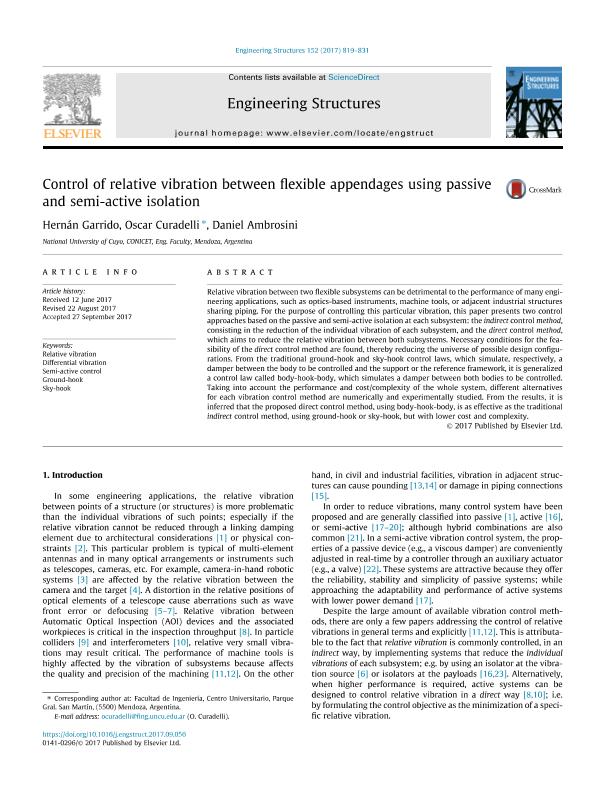Artículo
Control of relative vibration between flexible appendages using passive and semi-active isolation
Fecha de publicación:
12/2017
Editorial:
Elsevier
Revista:
Engineering Structures
ISSN:
0141-0296
Idioma:
Inglés
Tipo de recurso:
Artículo publicado
Clasificación temática:
Resumen
Relative vibration between two flexible subsystems can be detrimental to the performance of many engineering applications, such as optics-based instruments, machine tools, or adjacent industrial structures sharing piping. For the purpose of controlling this particular vibration, this paper presents two control approaches based on the passive and semi-active isolation at each subsystem: the indirect control method, consisting in the reduction of the individual vibration of each subsystem, and the direct control method, which aims to reduce the relative vibration between both subsystems. Necessary conditions for the feasibility of the direct control method are found, thereby reducing the universe of possible design configurations. From the traditional ground-hook and sky-hook control laws, which simulate, respectively, a damper between the body to be controlled and the support or the reference framework, it is generalized a control law called body-hook-body, which simulates a damper between both bodies to be controlled. Taking into account the performance and cost/complexity of the whole system, different alternatives for each vibration control method are numerically and experimentally studied. From the results, it is inferred that the proposed direct control method, using body-hook-body, is as effective as the traditional indirect control method, using ground-hook or sky-hook, but with lower cost and complexity.
Archivos asociados
Licencia
Identificadores
Colecciones
Articulos(CCT - MENDOZA)
Articulos de CTRO.CIENTIFICO TECNOL.CONICET - MENDOZA
Articulos de CTRO.CIENTIFICO TECNOL.CONICET - MENDOZA
Citación
Garrido, Carlos Hernán; Curadelli, Raul Oscar; Ambrosini, Ricardo Daniel; Control of relative vibration between flexible appendages using passive and semi-active isolation; Elsevier; Engineering Structures; 152; 12-2017; 819-831
Compartir
Altmétricas




